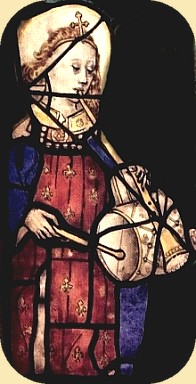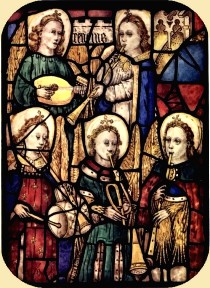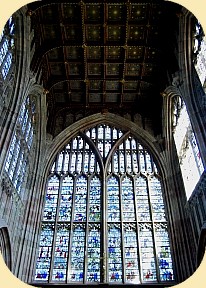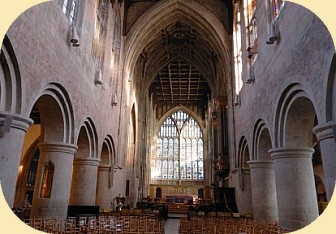pipe and tabor players as
architectural features in the UK
Great Malvern Priory Church, Worcestershire
15th century stained glass window

The pipe and tabor player is on the bottom left of a group of musical angels in the Great East Window.

The Great East Window is at the end of the nave. Only one third is original dating from the 15th century; the rest is a jumble of restored fragments. The north aisle was widened and these stained glass windows added during the period 1440-1500.
The musical angels are in the extreme right-hand column, lowest row of glass, centre.
This window has had a chequered history. In 1539 Great Malvern Priory surrendered to King Henry VIII as part of the Dissolution of the Monasteries. The monastic buildings were sold off to various people who then tore them down and sold the materials. As the priory church still belonged to the Crown the citizens of Malvern, (only 150 families), were able to persuade the King to sell it to them for £20 for use as their parish church . However, it had taken them two years to raise the funds and they had no money left to repair the building. The upside of this is that the "idolatrous" stained glass windows were never replaced.
The glass also survived the Puritan destruction of the 17th-century Civil War even though it raged in nearby Worcester, because it was surrounded by the forest of the Malvern Chase. Finally with the prosperity of the Industrial Revolution came the funds for repair: restoration work began in 1860. During World War II the stained glass was removed and kept in zinc-lined boxes for protection. After the war the organist undertook the long process of replacing the windows and restorations have continued again since 1977.
Special thanks to the Recorder Home Page for drawing my attention to this image
top of page

